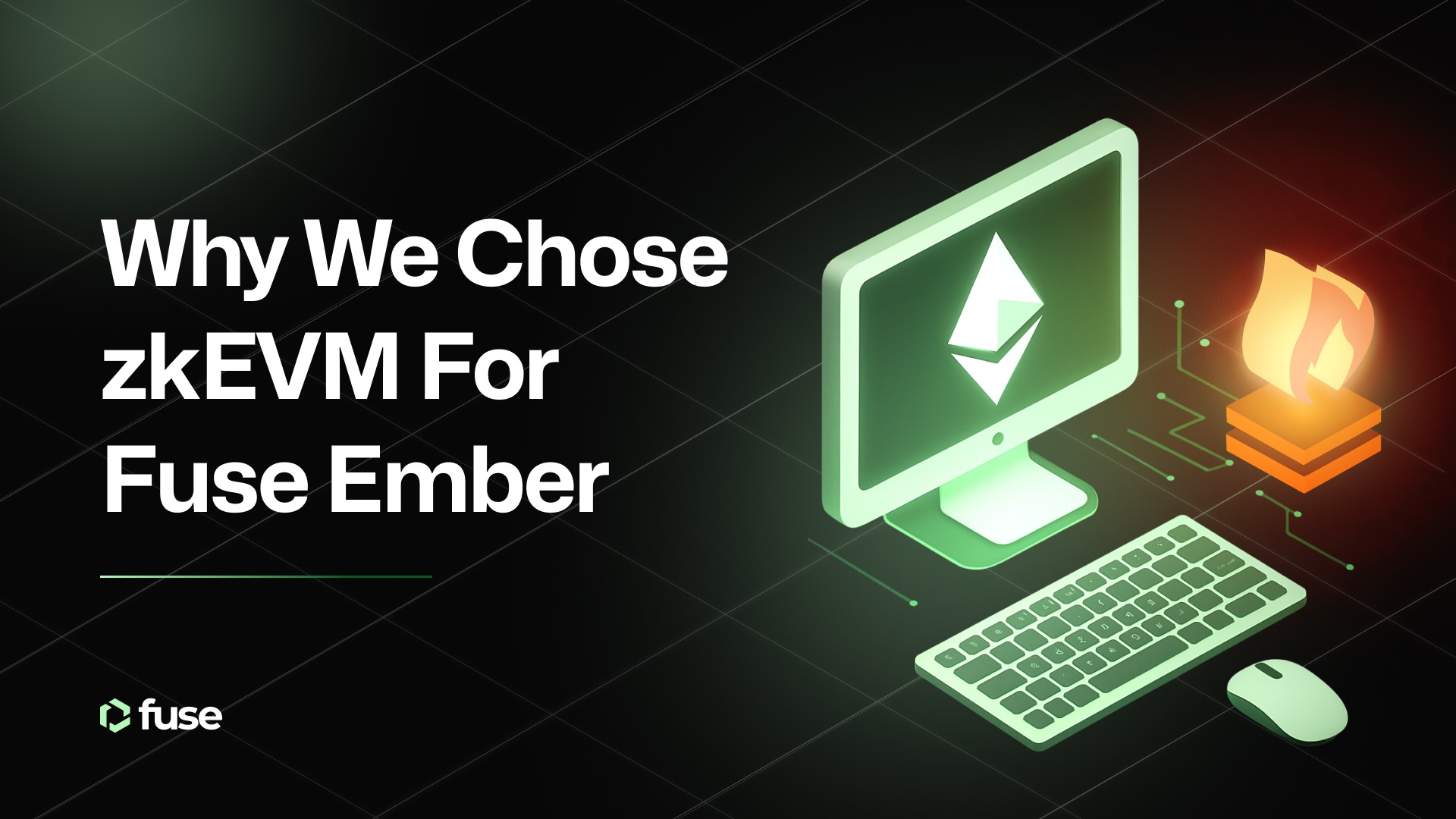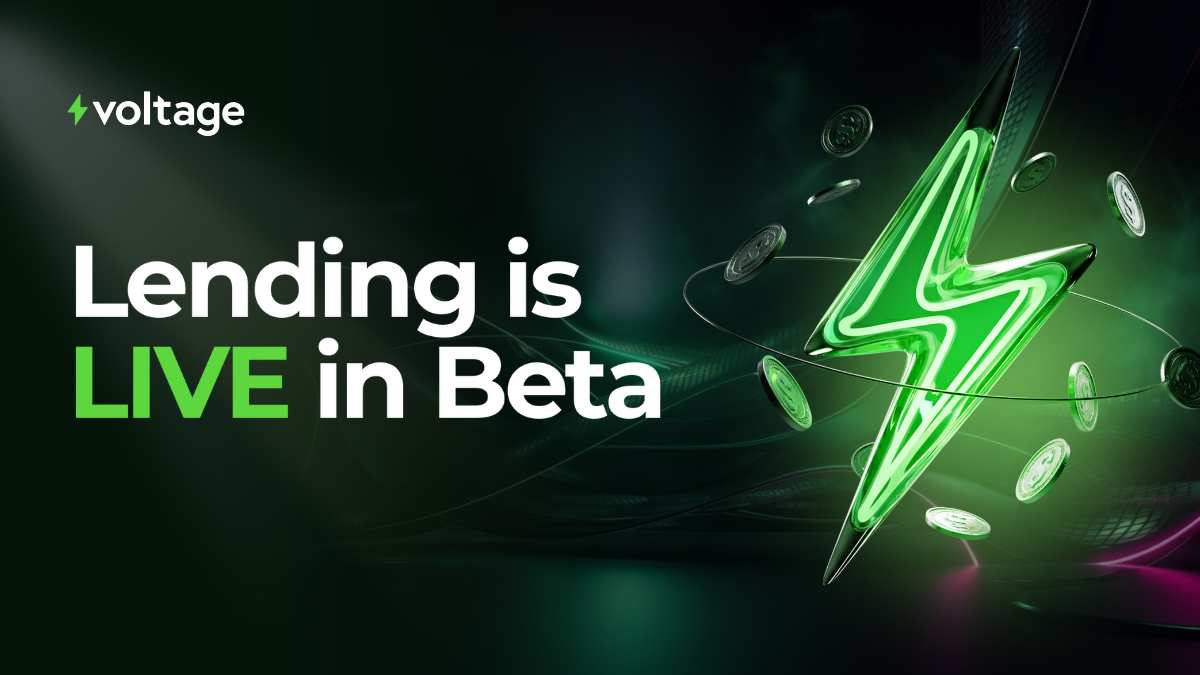Fuse unveils its updated technical roadmap, which outlines the team’s ambitious network plans for the coming year. Several topics dominate the agenda, most up for community discussion, while the immediate focus is launching the new Fuse SDK.
We’re thrilled to share some exciting updates regarding our vision for Fuse 2.0 and our Technical Roadmap for the following year. As our White Paper outlines, we’re committed to bringing Web3 to the masses and creating the most business and consumer-friendly blockchain ecosystem possible.
To that end, we recently decided to merge the parts of Charge that strongly align with Fuse’s goals under one significant effort. This means the core Charge team and all the products and services they’ve been building, including APIs and the SDK, will now be part of Fuse.
The remaining Charge team will continue to develop products and services built on Fuse APIs and SDK, providing payment-related services such as on and off-ramps, payment links, e-commerce integrations, and more.
With this significant organizational change, we’re thrilled to announce the launch of an enhanced Fuse SDK, enabling anyone to plug web3 services and crypto payments into their existing products with business-ready smart contract wallets. At the same time, Charge has released a WooCommerce and WordPress widget that allows entrepreneurs and businesses to integrate Web3 payments into their e-commerce websites easily.
In line with ambitious plans to scale the network and decentralize our middleware business layer, we propose a series of improvement proposals that, if voted into action, would come into force in the latter part of 2023.
The Fuse 2.0 vision and white paper shape a future where Fuse is a leading player in the Web3 and payments industry. The 2023 Fuse Technical Roadmap lays out the infrastructure to get there. We look forward to your feedback and support in our journey.

TL: DR
Q1
- Release the new Fuse Wallet SDK, providing tools to build mobile cross-platform Web3 apps and wallets – Live.
- Launch API Service: The Fuse API Service is a vital part of the services provided to Operators and powers the Fuse SDK. Its components will serve as the foundation for Power Validators’ services. – Live
- The WooCommerce Payment plugin is available for WordPress stores. – Live
- Fuse Improvement Proposal (FIP) for Power Validators.
Q2
- Fuse Improvement Proposal (FIP) for Tokenomics upgrade. We will share details in the FIP.
- API Service improvements:
- New Operators module – Operators will cover user and merchant fees.
- Smart contract wallet upgrades.
- EIP-4337 – Account Abstraction compatibility.
- Web SDK version for the JS ecosystem.
- SDK extensions for social logins and on and off ramps.
- Fuse Improvement Proposal (FIP) for consensus upgrade.
- Fuse open-source mobile wallet upgrade to new SDK.
Q3
- API service new feature: Contract-powered recurring payments service.
- Privacy Layer first pilot.
- Power Validators (PVs) – Milestone 1. PVs can run relayers.
Q4
- Consensus Upgrade is live if the proposal passes in Q2.
- Power Validators – Milestone 2. Adding more services.
- Integration of liquid staking with Power Validators.
- FIP for privacy layer tokenomics upgrade proposal.
Fuse Technical Roadmap on a page
Now you have the big picture, let’s get more specific and dive into the technical roadmap. Currently, several critical matters dominate this year’s agenda.
The Fuse SDK
The Fuse SDK is designed to make it easy for developers to create, manage, and engage with Fuse Smart Wallets in their applications. The SDK provides pre-built functions and utilities, allowing developers to interact with Fuse Smart Wallets securely and efficiently.
Using Fuse Smart Wallets provides several benefits, including
- Enhanced security: Fuse Smart Wallets are non-custodial accounts that allow users to deposit funds that no one else can control and withdraw at any time. Each Fuse Smart Wallet is a smart contract associated with the user’s EOA and can only be controlled by that user.
- Enhanced UX: Fuse Smart Wallets support gasless transactions, improving the user experience and making it more seamless to interact with the blockchain.
- Better developer experience: The Fuse Wallet SDK abstracts away the complexities of web3 development, such as cryptography, wallet management, and smart contract interactions, making it easier for developers to build blockchain-based applications.
The Fuse Wallet SDK is currently available for Flutter/Dart. A Typescript SDK is planned for release soon.
Learn more about the Fuse SDK.
Power Validators
We are outlining significant changes to the network with the concept of Power Validators (PVs). PVs will provide additional business services for network participants, like transaction relaying, API endpoints, oracles for data feeds and bridges, user data storage, and L2 nodes.
If voted into play, this proposal will require tokenomics changes as PVs will have an increased stake requirement and will accept payments from Operators for every read-and-write operation they run through PVs on Fuse. Currently, the staking requirement for validators is 100k Fuse.
We expect this to rise at least three times to become a PV, but first, we will launch the proposal and gather feedback.
We plan to launch the first proposal in Q1, with the first implementation of the FIP released in Q3.
Payment Primitives
On Fuse, we envisage every user or merchant represented by smart contract wallets deployed on the Fuse network or Smart Wallets. This architecture provides several advantages to Operators, developers, and end users for blockchain-based financial applications.
For example, in a regular blockchain wallet, the user must manage their funds and interact with protocols and smart contracts directly, i.e., sign approvals, manage private keys, and deal with the mechanics of fund management—a daunting task, even for veterans.
Imagine this as a non-custodial decentralized “bank account” that can help consumers retrieve and manage funds more safely or add new features or tools for easier and safer self-custody.
We aim to introduce a standard for smart contract wallets on Fuse that, in the future, can interact natively with every decentralized application on the network.
Privacy
Businesses and consumers also need privacy. First, businesses need a way to send and receive private transactions. Also, they want to conceal their balances from the public but be auditable simultaneously.
We must integrate those two aspects with the Fuse Network development stack, Fuse SDK, its smart contracts, API infrastructure, smart wallet contracts, and Fuse Network. Another condition is providing scalability and throughput for billions of daily transactions.
There are already promising emerging solutions in this area. Therefore we don’t need to reinvent the wheel. However, we needed to look into solutions provided by pioneers like Aztec, Starkware, Aleo, Dusk, and more to understand what solution would work best for our case. So far, Aztec stands out as a solution because
- L2 ZK Rollup is private by default by applying ZKP with a unique UTXO model. Thus the data on Aztec is private, and the L1/L2 sync is done with ZKP.
- Aztec takes a lot of inspiration from zkCash with some improvements but packages them as an L2 Rollup instead of an independent network.
- Introduces Noir language to hide the ZK complexity. Under the hood, use SNARK with PLONK. Noir is based on Rust. It’s a DSL language that provides an abstraction layer working with ZKP.
- By design, it can be integrated into various ZKP systems (STARK/SNARK) and verified by EVM and Typescript systems.
- Everything is OSS.
We will keep the community updated on decisions in this direction.
Consensus Upgrade
We propose to upgrade the Fuse Network from dPoS to Ethereum PoS Consensus. This will bring us closer to the Ethereum ecosystem. However, we first must launch the Fuse Beacon Chain to ensure consensus logic is sound and sustainable. Once complete, we can merge the Beacon Chain with Fuse Mainnet, leaving the PoS Fuse Network.
However, Fuse Staking and Governance will become obsolete by launching Fuse Beacon Chain. Therefore we will need to launch liquid staking on Fuse. The critical thing is that the PoS consensus can be successfully integrated with PVs, and Fuse keeps its unique on-chain governance.
It boils down to finding the sweet spot of community participation that fits a network like Fuse, as with PoS, some types of voting will become obsolete.
For example, the logic of choosing a validator set is dictated by PoS. At the same time, we retain the ability to hold a vote on the inflation rate as we want the community to be part of these decisions.
The migration to a Beacon Chain requires a reduction in inflation (halving) and an increase in the minimum transaction fee. At the same time, the delegation will need to be replaced with Liquid staking.
The proposal for consensus migration and the scaling of the Fuse blockchain will require discussion and voting of the community. We plan to launch the first proposal in Q2, with the first implementation launching in Q4.
Now it’s time to talk.
Fuse builds infrastructure for entrepreneurs and organizations that want to experiment, launch and scale Web3 apps. Anyone can build on the Fuse Blockchain and leverage enterprise-ready, decentralized tech – be it existing crypto projects, start-ups, or blue-chip companies.
Fuse already provides and strives to enhance an enterprise-ready, robust, reliable, and secure decentralized blockchain infrastructure platform buoyed by a native marketplace for decentralized services.
The Fuse 2023 Technical Roadmap revolves around improvement proposals to be voted on by the community and stakeholders, create debate, and push change as we vie in the competitive Web3 landscape.
.svg)
.svg)












